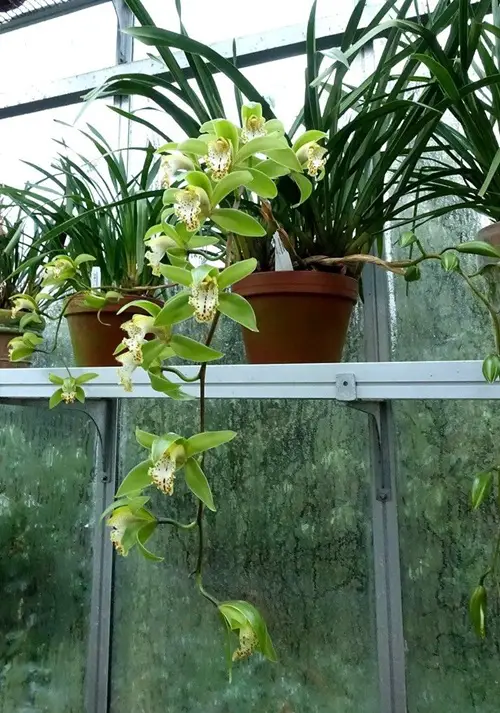There are almost 30,000 orchid varieties, but today, we look at the ones you can eat. Check out the Most Beautiful Edible Orchids!
Bet you didn’t know you can eat orchids! These stunning blooms are just as lovely in a vase as they are on your taste buds. But not all are edible, and sometimes, not all parts can be eaten. So, let’s explore all there is to know about the most beautiful edible orchids and all their uses!
Beautiful Edible Orchids and Their Uses
1. Vanilla Orchid
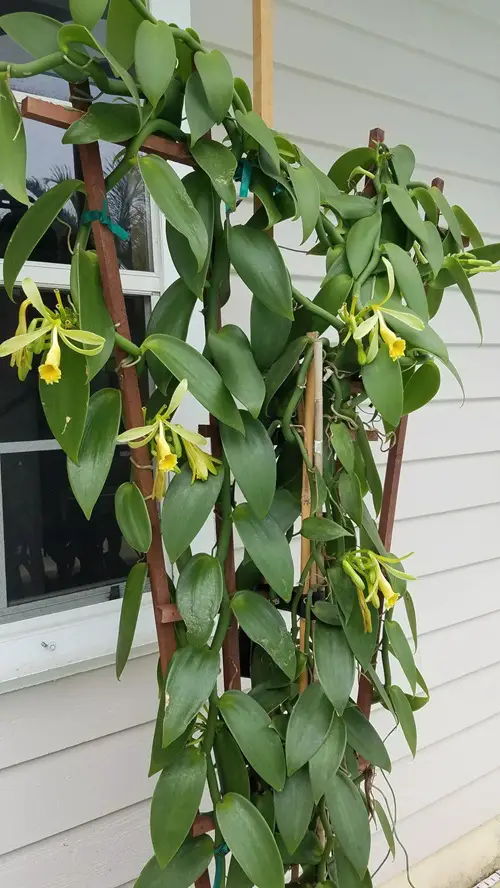
Botanical Name: Vanilla planifolia
This tropical plant belongs to the Vanilla genus and is the only orchid that produces edible fruit. It grows mainly in Mexico, Central America, and similar tropical regions. This climbing vine can grow up to 75 feet tall and has yellow flowers and black seeds.
These black seeds, or vanilla beans, can be mixed with various foods, drinks, cream, and custard-based sauces. So, the news is that these orchids are used to create the famous vanilla essence and flavoring.
2. Dendrobium Orchids
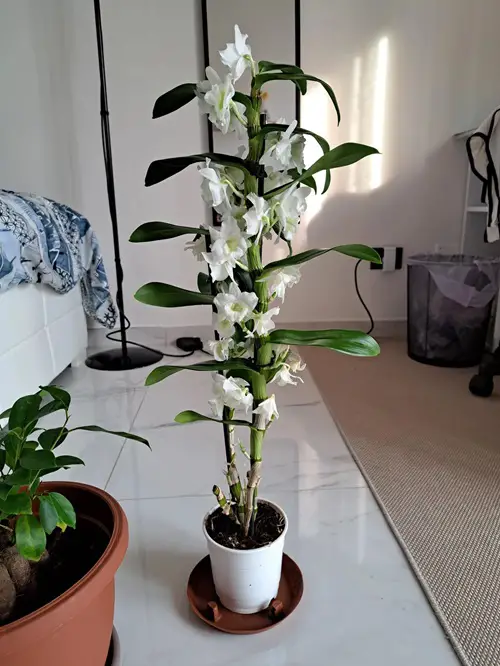
Botanical Name: Dendrobium nobile
What it lacks in smell is what it makes up for in its herbal and medicinal uses. These edible orchids have white and pink flowers and grow mainly in Southeast Asia, the Himalayas, Malaysia, and Japan. Just take the flower petals and dry them up for a few days—they are great garnishes and have a leafy vegetable flavor. Avoid the calyx, as it’s bitter.
Its stem is called tiepishihu in traditional Chinese medicine, and is sweet to taste. You can also make tea to benefit from its medicinal properties.
3. Boat Orchids
Botanical Name: Cymbidium hookerianum
The boat orchid is a perennial and among the easiest orchids to grow. With good care, it can live up to 20 years! However, it’s bitter on the palate but widely used for flavoring Bhutanese cuisine. You can cook and eat its bulb-like stems like potatoes and add its flowers to curries, salads, and candies.
It has strap-shaped leaves and large, waxy flowers and thrives mainly in subtropical regions of Asia and parts of Australia.
4. Satyrium Orchid
Botanical Name: Satyrium spp.
These orchid varieties have fleshy, prostrate leaves and light pink flowers. Satyrium orchids are quite common in Africa, where the locals use their tubers to make a meat-like dish called Chikanda.
A subspecies, the Satyrium atherstonei, also has therapeutic uses and helps cure swellings.
5. Early Purple Orchids
Botanical Name: Orchis mascula
Early purple orchids have broad, wavy leaves and a remarkable spotted lip on their purple-hued flowers. These incredible edible orchids and their uses are quite popular in Iran, Mongolia, and the Mediterranean, where they grow.
Tubers of early purple orchids are popularly used to create a flour called salep, which in turn is used to make a traditional Turkish drink.
6. Himalayan Marsh Orchid

Botanical Name: Dactylorhiza hatagirea
Famous for its medicinal qualities, this terrestrial orchid grows in temperate to alpine regions of Nepal, Pakistan, India, Bhutan, and Afghanistan. Also known as the Marsh orchid, it thrives in moist, humus-rich soil and flowers from late spring to early summer.
With a sweet root, its tubers are starchy, and its extracts treat digestive issues and flu-like symptoms. Categorized as endangered, this plant grows freely in the wild but is prohibited for collection and sale.
7. Gastrodia Orchid
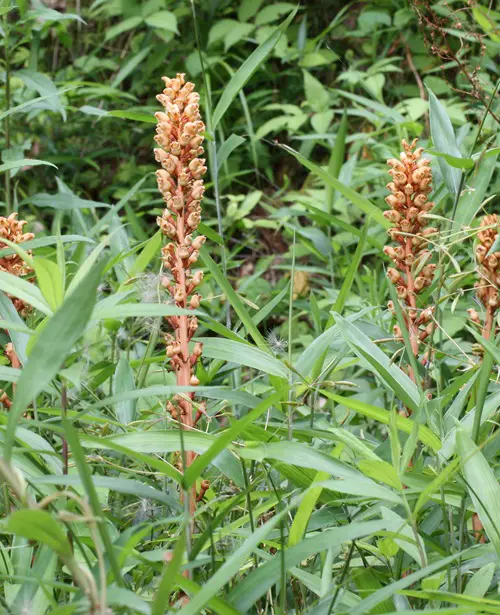
Botanical Name: Gastrodia
The Gastrodia genus comprises over 90 varieties and grows in Asia and the Western Pacific rim. With a nutty, mild flavor, you can roast the tubers and eat them like potatoes. Replete with healing properties, especially in traditional Chinese medicine, overharvesting from the wild has now led to their endangered status.
Did you know they’re also called potato orchids because of the unique shape and color of the flowers?
8. Habenaria Orchid
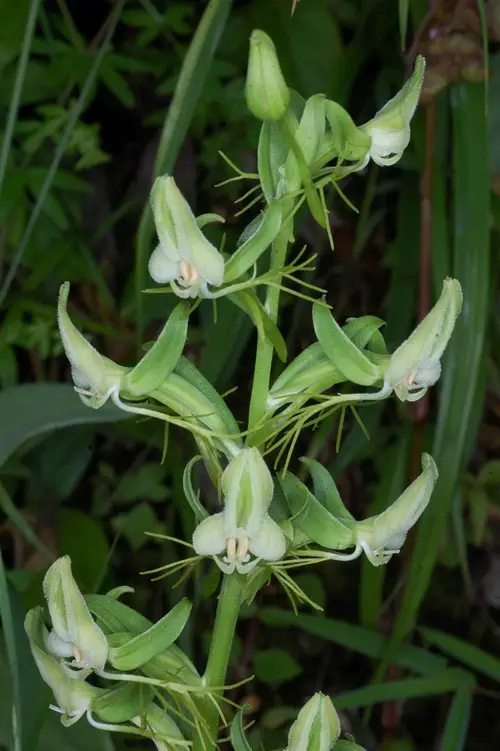
Botanical Name: Habenaria intermedia
Habenaria orchids are terrestrial plants with slender stems and delicate flowers. These rare medicinal herbs grow wild in the Himalayas. You can boil and cook its roots, tubers, and leaves and consume them like vegetables.
Traditional Indian and Chinese medicine uses these orchids to treat skin diseases, asthma, and memory issues.
9. Malaxis Orchid
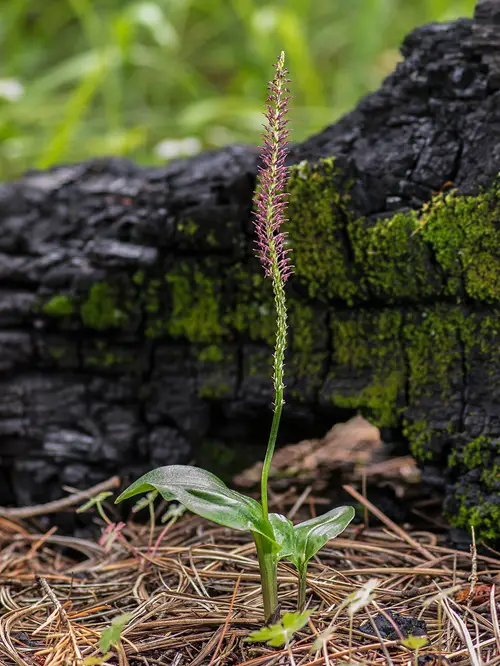
Botanical Name: Malaxis acuminata
The last one on our list of beautiful and edible orchids grows in shrubby and semi-evergreen forests of India, Cambodia, and Southeast Asia.
This edible terrestrial orchid species is also widely exploited in Ayurveda. Known as Jeevaka, a key ingredient of the famous Chyawanprash, its bulbs are common in certain hilly region cuisines in India.
These have many uses, the primary one being medicinal treatments for immunity boosting, fever, hemorrhages, tuberculosis, and blood disorders.
Don’t forget to get your hands on one of these and try it for yourself. And while you’re at it, try these fragrant orchids for your garden!


